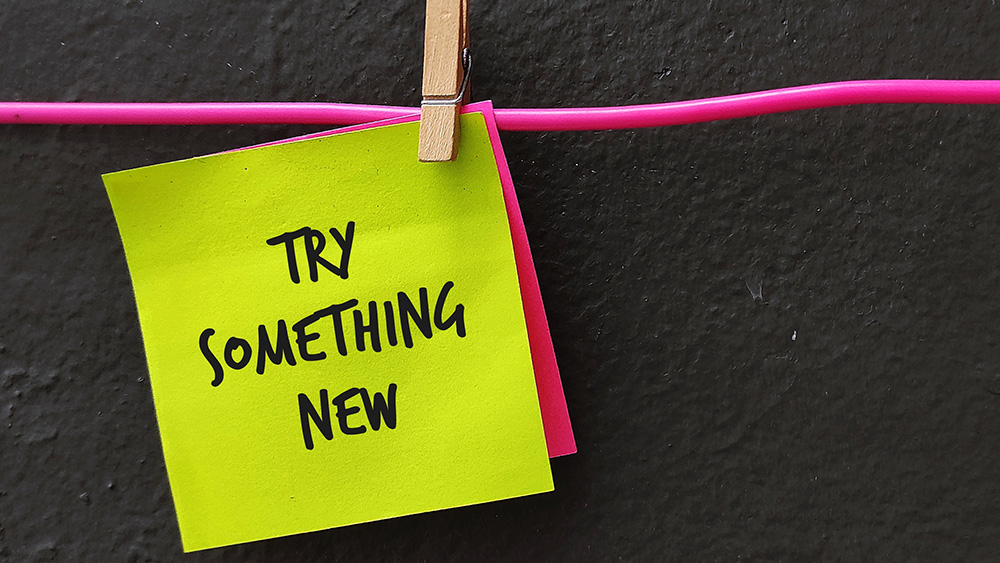
Try three new things at your event this year and make it a regular practice going forward, suggests Beth Surmont.

Beth Surmont, CMP-Fellow, FASAE, CAE
The beginning of the year presents a fresh opportunity to reflect on what we have learned and how we want to use that to grow in the coming year. The events industry continues to evolve at a rapid pace and the best way to keep current is to look ahead and anticipate the trends coming for this year. Here is what we’re keeping a close eye on in these coming months.
- AI — Artificial Intelligence (AI) is not a passing trend — it has become an indispensable tool. As we navigate through the year, AI will play an even more prominent role in the workplace and in society than it does today. If you haven’t already embraced AI in your event planning, now is the time to start learning. There are countless resources available on how to use it, and PCMA’s Spark is a great place to get started. At this point, not using AI is like doing math with paper and pencil instead of using a calculator. For those already comfortable working with AI, it is imperative to form a solid understanding of the challenges, concerns, and ethical considerations surrounding its use.
- Event Sustainability — This long-simmering conversation is finally coming to boil. Major shows like CES, PackExpo, and World of Concrete have already implemented public-facing sustainability initiatives. In addition, consumers are increasingly considering sustainability as a benefit when traveling. Hilton recently reported that nearly three-quarters of travelers want to minimize their environmental footprint. It’s only a matter of time until we see policies and regulations around the environmental impact of events. Best to be proactive: Learn how to make your events more sustainable and put those practices into place.
- Intentional Connections — The two primary benefits of events have always been content and connections. However, with the surplus of quality content online, the intrinsic value of in-person has shifted to connecting with like-minded peers. But even though we recognize how networking has taken priority, we largely have not changed our approach as planners. We still rely on attendees to do the work of finding each other at receptions and hallway breaks. We need to focus our event design on frictionless and intentional networking, ensuring that people walk away from the event having made the valuable connections they are seeking.
- In-Person Value Differentiation — With tightened budgets, it is harder than ever for professionals to get approval from their employer to travel to an in-person event — and it takes more to convince potential registrants to make the decision to attend even if their expenses will be covered by their employer. If your primary value proposition is the content — which can be delivered digitally (see number 3) — that is only making it difficult for attendees to justify the time and cost of coming to your event. We must start framing in-person as a value-add and sharing all the additional benefits one gets from attending. Think beyond “networking” and take a holistic approach. Consider incorporating local experiences, allowing attendees to connect with the culture and environment of the event’s location. Create high-value synthesis conversation opportunities, where attendees can discuss their learnings from the event. And offer opportunities to pause, refresh, and renew — through wellness activities, reflection outdoors, or just simple downtime to reflect on where they are in life. As you plan, take a moment to ask what is it about your in-person event that cannot be delivered through a screen, and will it hold enough value to make it worth the trip?
- Changing Things up — The model for events has largely not changed in 100 years and chances are, the event you are running today looks very similar to how it did in 2019. But the world is vastly different today and will continue to evolve in new and unexpected ways. Even more, our audiences are changing. The loyal attendees we’ve been planning for are beginning to retire and the potential attendees following behind them have different expectations. It is not simply a generational difference. These are digital natives who have grown up with completely different models and expectations around learning and access to learning (think card catalog vs. iPhone). If you aren’t shifting to meet these needs now, you’ll be completely left behind once the AI natives enter our workforce. Start by planning to try three new things at your event this year and make it a regular practice going forward.
We are at an inflection point in the events industry where we have the perfect combination of opportunity, technology, and insight to elevate the impact of our events. Don’t let this chance pass you by — embrace the trends, challenge the status quo, and explore new possibilities.
Beth Surmont, CMP-Fellow, FASAE, CAE, is vice president of event strategy and design for marketing, strategy, and experience agency 360 Live Media.
